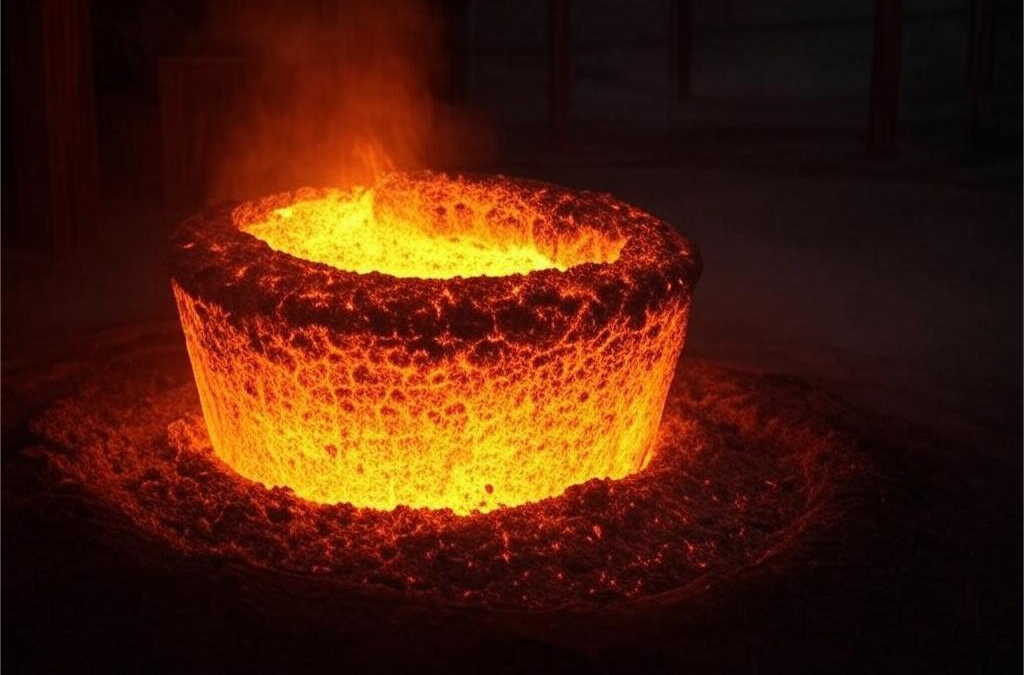Desire is a powerful force that drives much of human behavior, shaping our goals, dreams, and everyday decisions. It’s the feeling of wanting something, whether that’s a physical object, an experience, or a change in our life circumstances. Desires can range from the simple and fleeting, like craving a particular food, to the profound and enduring, such as aspiring for success in a chosen career. Understanding the spectrum of desires can provide valuable insights into human motivation and the diverse ways people seek fulfillment and happiness.
This article explores the top 30 examples of desires, offering a broad perspective on what people yearn for across different aspects of life. From the universal quest for love and connection to the pursuit of knowledge and personal growth, each example sheds light on the myriad ways desires manifest. By defining and examining these desires, we aim to paint a comprehensive picture of the motivations that propel us forward, drive our choices, and influence our interactions with the world around us.
Key Examples of Desire
1. Achievement Desire: The drive to excel and achieve in academics, career, sports, or any personal endeavor. This desire motivates individuals to set high goals, persist through challenges, and strive for excellence. It’s fueled by the satisfaction of accomplishing something significant and the recognition that comes with success. People with a strong desire for achievement are often self-motivated, resilient, and continuously seeking ways to improve.
2. Social Connection: Humans inherently crave connection, belonging, and love. This desire drives us to form friendships, seek romantic relationships, and build communities. It stems from our evolutionary need for cooperation and support within groups. Fulfilling this desire leads to emotional well-being, as social connections provide support, affection, and a sense of belonging.
3. Curiosity and Knowledge: The desire to learn, understand, and explore the world around us. This pursuit of knowledge can manifest in academic interests, travel, reading, or exploring new hobbies. It’s driven by the joy of discovery and the satisfaction of expanding one’s understanding. People who actively seek knowledge are often more open to new experiences and adaptable to change.
4. Financial Security: The desire for financial stability and independence. This encompasses earning enough to live comfortably, save for the future, and afford pleasures without undue stress. It’s rooted in the need for safety and security, allowing individuals to focus on personal growth and happiness without the constant worry of financial hardship.
5. Self-Improvement: The drive to better oneself, whether through personal development, health and fitness, or learning new skills. This desire is motivated by the aspiration to reach one’s full potential and live a fulfilling life. It involves setting personal goals, reflecting on one’s progress, and persistently working towards improvement.
6. Creative Expression: The need to express thoughts, feelings, and ideas creatively, whether through art, music, writing, or dance. This desire is driven by the urge to share one’s unique perspective and to connect with others on an emotional level. Creative expression is a powerful way to explore one’s identity and experiences.
7. Adventure and Exploration: The longing for new experiences, challenges, and the excitement of the unknown. This desire motivates people to travel, try new activities, and step out of their comfort zones. It’s fueled by the thrill of discovery and the personal growth that comes from facing and overcoming unfamiliar situations.
8. Recognition and Respect: The wish to be acknowledged and valued by others, whether in personal relationships or professional environments. This desire stems from the need for social validation and the feeling of being appreciated for one’s efforts and qualities. Achieving recognition and respect can boost self-esteem and motivate further achievements.
9. Health and Well-being: The desire to maintain physical, mental, and emotional health. This encompasses eating well, exercising, managing stress, and seeking medical care when needed. It’s motivated by the understanding that good health is the foundation for a fulfilling life, enabling individuals to pursue their other desires more effectively.
10. Spiritual Fulfillment: The search for meaning, purpose, and connection to something greater than oneself. This desire can manifest through religion, meditation, nature, or personal reflection. It’s driven by the quest to understand life’s mysteries and find peace within the larger universe. Fulfilling this desire provides a sense of inner calm, moral guidance, and a deeper connection to the world.
11. Intimacy and Vulnerability: The longing for close, authentic relationships where one can share their true self, emotions, and fears without judgment. This desire underpins the development of deep, meaningful connections and trust between individuals. It’s driven by the human need for closeness and emotional safety, leading to stronger, more fulfilling relationships.
12. Personal Autonomy: The need to make one’s own choices and control one’s own life. This desire is about independence and self-determination, whether in making small daily decisions or major life changes. It reflects the value placed on freedom and the ability to shape one’s own destiny, leading to a sense of empowerment and self-respect.
13. Legacy Building: The aspiration to leave a lasting impact on the world, whether through one’s work, philanthropy, or by raising a family. This desire is motivated by the idea of being remembered and making a difference that outlives one’s own existence. Fulfilling this desire gives a sense of purpose and contributes to the broader community or future generations.
14. Safety and Security: Beyond financial stability, this desire encompasses physical safety, health, and a stable environment. It’s a fundamental human need, driving us to seek safe living conditions, protect our loved ones, and support systems that ensure community well-being. Fulfilling this desire allows for peace of mind and the foundation upon which to pursue other desires.
15. Aesthetic Appreciation: The pleasure derived from beauty, whether in art, nature, or everyday life. This desire motivates people to create, preserve, and seek out beauty in various forms. It’s driven by the joy and inspiration beauty brings, enhancing our experience of the world and contributing to a sense of wonder and satisfaction.
16. Competence and Mastery: The drive to become skilled and proficient in an area of interest or profession. This desire is about the satisfaction that comes from expertise, understanding, and the ability to perform well. It motivates ongoing learning and practice, contributing to self-efficacy and confidence in one’s abilities.
17. Leisure and Relaxation: The desire for downtime, rest, and activities that rejuvenate the mind and body. This reflects the need for balance between work and play, allowing individuals to recharge and enjoy life’s simpler pleasures. Fulfilling this desire is essential for mental health, preventing burnout, and maintaining overall well-being.
18. Empathy and Compassion: The yearning to connect with others on an emotional level, to understand and share their feelings. This desire drives acts of kindness, support, and the building of empathetic relationships. It’s rooted in our social nature and the recognition of shared human experiences, fostering a sense of community and care.
19. Innovation and Progress: The urge to invent, improve, and push boundaries. This desire fuels technological advancements, scientific discoveries, and social reforms. It’s motivated by the belief in better solutions and the potential for positive change, driving societies forward and enhancing quality of life.
20. Equity and Justice: The aspiration for fairness, equality, and justice in society. This desire motivates advocacy, activism, and support for policies that protect human rights and promote social justice. It reflects a deep-seated belief in the dignity and worth of every individual, driving efforts to create a more equitable world.
21. Challenge and Growth: The drive to tackle obstacles, face new challenges, and grow from these experiences. This desire propels individuals out of their comfort zones, fostering personal development and resilience. It’s fueled by the satisfaction of overcoming difficulties and the personal growth that comes from navigating life’s ups and downs.
22. Playfulness and Joy: The pursuit of fun, laughter, and lightheartedness in daily life. This desire is about embracing moments of joy, cultivating a sense of humor, and appreciating the playful aspects of life. It enhances well-being, reduces stress, and brings a sense of balance to our lives.
23. Recognition of Beauty in Simplicity: The ability to find beauty and joy in simple, everyday moments. This desire encourages mindfulness and the appreciation of the present, leading to a more contented and appreciative outlook on life. It’s about valuing the little things and finding happiness in the ordinary.
24. Freedom of Expression: The need to voice opinions, beliefs, and personal identity freely. This desire is central to individuality and democracy, allowing for diversity of thought and creativity. It supports personal authenticity and societal progress, enabling individuals to contribute their unique perspectives to the wider world.
25. Peace and Tranquility: The yearning for calm, serenity, and a life free from turmoil and stress. This desire drives the pursuit of practices like meditation, spending time in nature, or engaging in activities that soothe the mind and body. It’s about finding inner peace and creating a harmonious environment.
26. Moral Integrity and Ethics: The aspiration to live according to one’s values, principles, and ethical standards. This desire is about aligning actions with beliefs, leading a life of honesty, and making decisions that reflect moral integrity. It fosters trust, respect, and a sense of fulfillment from living authentically.
27. Legacy of Kindness and Impact: The wish to be remembered for positive contributions, kindness, and making a difference in the lives of others. This desire motivates charitable actions, mentorship, and efforts to support and uplift those around us. It’s driven by the belief in leaving the world better than we found it, ensuring a lasting and meaningful legacy.
28. Pursuit of Harmony and Balance: The desire for equilibrium in personal, professional, and spiritual aspects of life. This aspiration drives individuals to seek a state where all facets of their existence coexist without conflict, leading to a sense of completeness and contentment. It’s about managing life’s complexities in a way that aligns with one’s core values and goals.
29. Adventure and Risk-Taking: The thrill of engaging in activities that push the boundaries of one’s comfort zone, whether through travel, extreme sports, or unconventional career paths. This desire is fueled by the adrenaline and growth that come from facing the unknown and the satisfaction of conquering fears.
30. Contributing to Community Well-being: The aspiration to make a positive impact on one’s community through volunteer work, activism, or simply acts of kindness. This desire stems from the recognition of one’s role within a larger social fabric and the fulfillment that comes from contributing to the common good.
What is Desire?
Desire is a strong feeling of wanting to achieve or possess something. It encompasses a wide range of emotional and cognitive states, from basic physical needs to complex personal ambitions. At its core, desire is the motivation behind much of human behavior, influencing our choices, actions, and goals. It can be directed towards tangible objects, experiences, relationships, or achievements, reflecting the diverse aspirations and needs of individuals. Understanding desire is crucial in various fields such as psychology, marketing, and personal development, as it plays a significant role in decision-making and human fulfillment.
Desire acts as a driving force that propels individuals towards their goals, often serving as a catalyst for growth, change, and achievement. It is both a psychological and physiological phenomenon, involving complex interactions between the brain, emotions, and bodily needs. Desires can be temporary, influenced by immediate surroundings and experiences, or long-lasting, deeply rooted in one’s values and aspirations. Recognizing and managing desires is essential for personal satisfaction and well-being, as it helps individuals make informed decisions that align with their true interests and goals. By understanding the nature of desire, people can better navigate their pursuits, overcoming obstacles and realizing their full potential.
In the realm of psychology, desire is often distinguished from needs and wants by its depth and intensity. While needs are essential for survival and wants are preferences or wishes, desires go a step further, embodying a deep-seated yearning that can drive individuals to extraordinary lengths to achieve fulfillment. This distinction highlights the powerful role of desire in shaping human experiences and the pursuit of meaning in life.
Moreover, the study of desire intersects with various disciplines, including philosophy, where it is analyzed in the context of human freedom, ethics, and the quest for happiness. In marketing and economics, understanding consumer desires is crucial for creating products, services, and campaigns that resonate with target audiences, driving demand and customer engagement.
Ultimately, desire is a fundamental aspect of the human condition, reflecting our capacity for imagination, aspiration, and striving for what we perceive as valuable or necessary for our happiness and satisfaction. It is the engine behind innovation, creativity, and the relentless pursuit of personal and collective goals. By examining and embracing our desires, we gain insights into our deepest motivations, guiding us towards more fulfilling and purposeful lives.
Desire as a Catalyst for Cultural Progress
Desire, a multifaceted and potent force, weaves through the fabric of every culture, shaping traditions, norms, and the very essence of human motivation. In its broadest sense, desire encompasses the entire spectrum of longing, from the basic human need for food and shelter to the complex yearnings for status, power, and intellectual fulfillment. This vast range of aspirations plays a pivotal role in the evolution of societies, acting as both a catalyst for progress and a source of conflict.
At the heart of cultural expression, desire manifests through art, literature, music, and fashion, offering a window into the collective psyche of a society. Through these mediums, cultures articulate their deepest aspirations, fears, and values. The Renaissance, for example, was not just a period of artistic flourishing but also a vivid illustration of humanity’s desire for knowledge, beauty, and a reconnection with the classical past. Similarly, the relentless pursuit of innovation in today’s digital age mirrors our insatiable desire for convenience, connectivity, and newness.
Moreover, desire drives economic engines, fueling consumerism and the quest for material wealth. The American Dream, with its promise of prosperity through hard work, encapsulates the powerful role of desire in shaping national identity and individual life paths. Yet, this pursuit of material success also reflects the complexities of desire, where aspirations for financial stability and social mobility can clash with the pursuit of happiness and personal fulfillment.
Cultural rituals and celebrations further illustrate how desire is ritualized and communalized, binding individuals together in shared experiences and expressions of longing. Festivals, ceremonies, and holidays not only provide a pause from the mundane but also allow communities to collectively express desires for fertility, prosperity, remembrance, and renewal. These events stand as testament to the enduring human need to manifest inner longings in outward, communal expressions.
However, the impact of desire on culture is not uniformly positive. It can foster division, dissatisfaction, and relentless competition, highlighting the dichotomy between personal desires and societal expectations. The pursuit of individual desires can lead to cultural conflicts when they challenge traditional norms and values, illustrating the delicate balance cultures must navigate between fostering individual fulfillment and maintaining social cohesion.
In navigating the terrain of desire, cultures develop norms and institutions designed to regulate and channel individual aspirations in ways that preserve social order while allowing for personal expression. Education systems, legal frameworks, and moral codes all play roles in shaping the direction and intensity of human desire, demonstrating the complex interplay between individual aspirations and collective values.
As societies evolve, so too do the objects and goals of desire, reflecting changes in values, technology, and global interconnectedness. The continuous interplay between desire and cultural expression underscores the dynamic nature of human societies, revealing that at the core of every cultural artifact, tradition, or innovation lies a deep-seated longing—a yearning not just for survival, but for meaning, connection, and transcendence.
In contemplating desire within culture, it becomes evident that this powerful force is both a reflection of our deepest human nature and a construct shaped by the societies we live in. It drives us toward the future, yet always with an eye on the past, in a perpetual dance of aspiration and fulfillment. Understanding this complex relationship offers insights into not only the mechanisms of cultural change but also the universal aspects of the human condition, reminding us of the shared dreams that bind us across time and space.
What is the Strongest Desire in Humans?
The concept of the “strongest desire” in humans can be quite complex and varies from person to person, shaped by individual experiences, cultural backgrounds, and personal values. However, if we were to generalize across the broad spectrum of human psychology and needs, a strong contender for this title would be the desire for connection and belonging.
Humans are inherently social creatures, and the need to connect with others, to feel part of a community, and to be loved and understood is deeply ingrained in our psyche. This desire stems from our evolutionary past where survival often depended on being part of a group. Today, this manifests in our need for friendships, romantic relationships, family bonds, and social interactions.
This longing for connection and belonging is closely related to the concept of love, which can be seen as a fundamental human desire. Love, in its many forms, drives much of human behavior and is central to our well-being and happiness. Whether it’s the love between family members, friends, or romantic partners, the desire to love and be loved is a powerful force that shapes our lives.
Moreover, psychologist Abraham Maslow’s hierarchy of needs, a theory in psychology proposed by Abraham Maslow in his 1943 paper “A Theory of Human Motivation,” places belongingness and love needs in its third tier, just above basic physiological needs and safety needs. This highlights the importance of social connections and love as central to human motivation and happiness.
In summary, while it’s difficult to pinpoint a single “strongest” desire due to the complexity and diversity of human needs and aspirations, the need for connection, belonging, and love stands out as a fundamental and universal human drive.
Desire’s Role in Motivation and Behavior
Desire, an intrinsic part of the human experience, acts as the engine of our actions, steering us through the myriad paths of life. It is the silent whisper that nudges us towards the dawn, urging us to chase the light of our aspirations, no matter how elusive. This force, subtle yet powerful, lies at the heart of motivation and behavior, shaping our choices, dictating our efforts, and coloring our dreams.
At its core, desire is the deep-seated longing for something we perceive as lacking or necessary for our well-being or happiness. It can be as simple as the craving for food when we’re hungry or as complex as the yearning for recognition and achievement. But regardless of its form, desire is the precursor to motivation, the psychological trigger that propels us into action. It is the spark that ignites the fire of ambition, the force that drives us to overcome obstacles, and the compass that guides our decisions and behaviors.
Consider the student who spends night after night studying, driven by a desire for academic excellence and the promise of a successful career. Or the athlete who pushes through the pain barrier, motivated by the dream of standing on the podium. In each case, desire fuels their motivation, providing a clear objective and the determination to reach it. Without this desire, motivation would falter, and behavior would lack direction, rendering achievements and progress unattainable.
Moreover, desire shapes behavior not just in the pursuit of long-term goals but in everyday decisions and interactions. It influences our preferences, from the clothes we wear to the company we keep, and guides our actions in social situations. Even our engagement with technology, from the endless scroll through social media to the binge-watching of series, can be traced back to underlying desires for connection, entertainment, or escape.
Yet, the role of desire in motivation and behavior is a double-edged sword. While it can lead to remarkable achievements and personal growth, unbridled desire can also steer us towards destructive behaviors or endless dissatisfaction. The key, then, lies in understanding and managing our desires, aligning them with our values and long-term well-being. This requires self-awareness and the ability to distinguish between fleeting whims and genuine aspirations that contribute to our personal development and happiness.
In a world that constantly bombards us with messages about what we should want, the ability to navigate our desires becomes paramount. It involves recognizing the difference between being driven by external expectations and being guided by inner values. When our desires stem from a place of authenticity, they become powerful motivators that can lead to fulfilling and purposeful actions.
Desire’s role in motivation and behavior is, therefore, fundamental. It is the underlying current that shapes our journey through life, directing our efforts, influencing our choices, and determining our direction. By understanding and harnessing this force, we can unlock our potential, achieve our goals, and find satisfaction in the pursuit of what truly matters to us. In the end, desire is not just about what we want; it’s about who we are and who we aspire to be, driving us forward in the endless quest for fulfillment.
Read also: Top 30 Hypocrisy Examples & Definition
The Most Popular on BitGlint

30 Naivety Examples & Definition
Naivety is something most people experience at some point in their lives. It often starts in childhood, but for some,...

Top 100 Things That Are Hot
Have you ever wondered about the hottest things around us or far beyond our everyday lives? Hot temperature isn't just...

Top 100 Optimism Examples & Definition
Optimism is more than just looking on the bright side. It’s a mindset that shapes how people face challenges, make...

50 Great Wisdom Examples & Helpful Advice
Wisdom is one of the most important qualities a person can have—but also one of the most misunderstood. It’s not just...

30 Patterns in Nature: Examples & Explanation
Patterns in nature surround us every day. From the delicate veins on a leaf to the mesmerizing spirals of a galaxy,...

30 Honesty Examples & Definition
Honesty is one of the most important values a person can have. It affects how we act, how we speak, and how others see...

30 Moral Reasoning Examples & Definition
Moral reasoning is something most people use every day, often without even realizing it. It’s the thought process...
Get Inspired with BitGlint
The Latest
20 Examples of Time and Its Meaning
Time is something we all experience, yet it can feel like a mystery. Have you ever noticed how a minute can fly by when you're having fun, but drag on forever in a boring meeting? This curious nature of time affects us all, shaping our days and influencing our lives...

40 Social Dilemma Examples in the World & Real Life
Social dilemmas are everywhere. They shape the choices we make at work, in our communities, and even on a global scale. These dilemmas happen when what benefits an individual might hurt the larger group. When too many people act in self-interest, it can lead to bigger...
20 Hinduism Examples: Symbols, Gods & Core Beliefs
Hinduism is practiced by over a billion of people every day - but for those unfamiliar with it, it can seem complex or even confusing. With its many gods, rituals, and traditions, it raises a lot of questions. What do Hindus actually believe? What are the main...
100 Things That Are in The Sky
The sky is full of things - some you see every day, others only once in a while. Some are natural, like clouds and stars. Others are made by people, like airplanes and satellites. From quiet sunsets to loud rocket launches, the sky is never empty. People have been...

